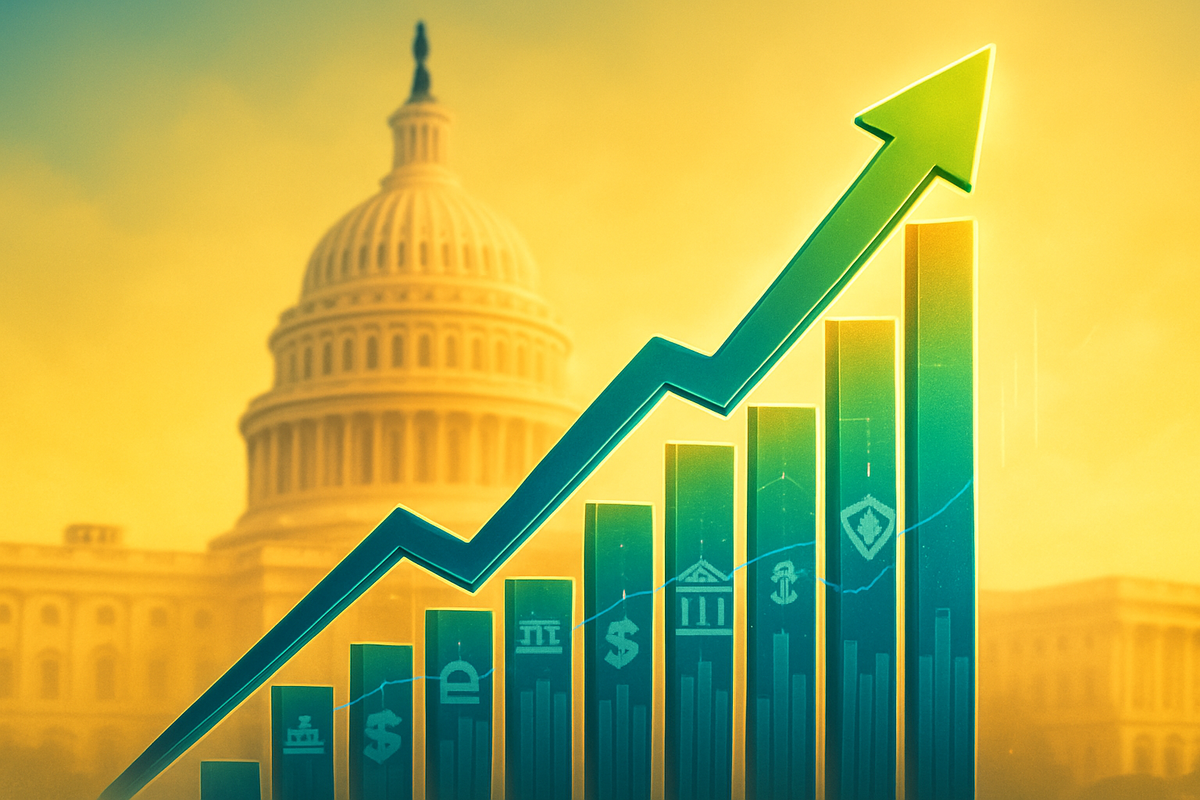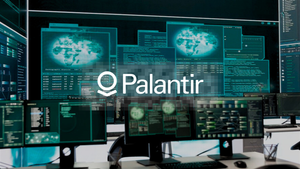
The financial markets are abuzz this week as the Dow Jones Industrial Average (DJIA) concluded a remarkable three-session surge on November 11, 2025, ultimately propelling the blue-chip index to unprecedented record highs. This significant rally, which saw the Dow climb by nearly 1,000 points, marks a pivotal moment for investors and the broader economy, signaling renewed confidence in the face of political uncertainty. The bounce was primarily fueled by widespread optimism that a prolonged U.S. government shutdown was finally nearing its end, with legislative progress hinting at a resolution.
This latest ascent of the Dow comes just a day before the current date of November 12, 2025, highlighting the immediate and dynamic nature of the market's reaction to legislative developments. The blue-chip index's robust performance underscores the market's sensitivity to political stability and its capacity for rapid recovery when key economic impediments are addressed. As investors digest this impressive rally, attention now turns to the sustainability of these gains and the broader implications for public companies and economic growth in the coming months.
A Surge Fueled by Legislative Breakthroughs
The recent market euphoria culminated on Tuesday, November 11, 2025, as the Dow Jones Industrial Average (DJIA) rallied an impressive 539 points, or 1.1%, to close at a new all-time high. This single-day leap was the capstone of a three-session ascent that saw the index surge by nearly 1,000 points, effectively surpassing its previous record set just two weeks prior. The primary catalyst for this powerful rally was a palpable sense of optimism spreading through Washington D.C., suggesting an imminent end to a protracted U.S. government shutdown that had cast a shadow of uncertainty over the economy.
The timeline of events leading to this moment began with the Senate's proactive passage of a bill aimed at reopening the government. This legislative action sent a strong signal to the markets, which had been growing increasingly anxious about the economic fallout of continued gridlock. Adding to the positive sentiment, reports indicated that President Donald Trump was on board with the Senate's initiative, paving the way for the bill's review and potential approval by the House of Representatives. Key players in this unfolding drama included investors, who eagerly responded to signs of political consensus, as well as the legislative bodies themselves, whose actions directly influenced market sentiment.
Initial market reactions were overwhelmingly positive. Beyond the Dow's record-setting performance, the S&P 500 (SPX) also experienced significant gains, reflecting a broad-based improvement in investor confidence. However, the Nasdaq Composite (IXIC) lagged slightly behind its counterparts, a nuance attributed by some analysts to lingering concerns about the high valuations of certain artificial intelligence (AI) stocks, notably (NASDAQ: NVDA) Nvidia. Despite this, the overall mood was one of relief and renewed bullishness, with fears of an economic slowdown reaching their lowest levels since 2007, according to market experts. This rebound demonstrates the market's inherent resilience and its tendency to rally once political uncertainties begin to dissipate.
Winners and Losers in the Wake of the Rally
The Dow's recent surge, driven by optimism surrounding the end of the government shutdown, has created a distinct landscape of potential winners and losers among public companies, primarily affecting the blue-chip components of the index and their related sectors. Companies that are highly sensitive to economic stability and government spending are poised to benefit significantly from a return to normal operations and restored consumer and business confidence. Conversely, some sectors, particularly those already facing valuation scrutiny, might see more muted gains or even relative underperformance.
Among the immediate beneficiaries, companies like (NASDAQ: PARA) Paramount Skydance and (NYSE: FDX) FedEx saw notable gains during the rally, as mentioned in market reports. Paramount Skydance, a media and entertainment conglomerate, could benefit from increased consumer spending and advertising revenue as economic uncertainty wanes. FedEx, a global logistics giant, stands to gain from a more stable economic environment, leading to increased trade volumes and business activity. Generally, industrial companies, financial institutions, and energy firms—often considered cyclical stocks—tend to perform well when economic prospects improve and regulatory burdens are perceived to lessen, as was the case with the post-election rally in late 2024. These sectors thrive on a predictable policy landscape and robust economic activity.
On the other hand, while the overall market celebrated, the Nasdaq Composite's comparatively subdued performance highlighted potential areas of concern. Specifically, companies within the technology sector, particularly those with already elevated valuations like (NASDAQ: NVDA) Nvidia, might face increased scrutiny. While the long-term growth prospects of AI remain strong, the market's slight hesitation could indicate that investors are becoming more selective, perhaps rotating funds from highly valued growth stocks into more economically sensitive value plays that stand to benefit directly from a government reopening. Defensive stocks, such as utilities and consumer staples, which often serve as safe havens during periods of uncertainty, might see a relative decline in investor interest as confidence returns to the broader market.
Wider Significance and Historical Context
The Dow's recent 1,000-point blue-chip bounce to record highs is more than just a fleeting market event; it carries significant implications that resonate across broader industry trends, potential ripple effects, and even regulatory considerations. This rally fits squarely into a historical pattern where markets often demonstrate remarkable resilience and tend to rebound vigorously following periods of political or economic uncertainty, such as government shutdowns. The swiftness of the recovery underscores the market's forward-looking nature, pricing in anticipated stability rather than dwelling on past disruptions.
This event highlights a crucial broader industry trend: the market's deep-seated desire for governmental stability and predictability. Prolonged shutdowns create uncertainty that can paralyze investment and consumer spending. The moment a resolution appears on the horizon, capital quickly re-enters the market, seeking to capitalize on the removal of a significant overhang. The ripple effects of this renewed optimism extend beyond the Dow's blue-chips, positively impacting other major indices like the S&P 500. While the Nasdaq showed some relative weakness due to specific valuation concerns in tech, a rising tide generally lifts most boats, suggesting broader market participation in the recovery.
From a regulatory and policy perspective, the resolution of the government shutdown, even if only anticipated, signals a return to legislative functionality. This can alleviate concerns about delayed regulatory approvals, stalled government contracts, and general policy paralysis that can hinder business operations across various sectors. Historically, markets have shown a consistent pattern of recovering after government shutdowns. Experts have even suggested ambitious targets, such as the S&P 500 potentially reaching 7,000 by mid-December, reflecting the strong historical precedent for post-shutdown rallies. This comparison provides a powerful context, indicating that the current bounce is not an anomaly but rather a predictable, albeit robust, market response to improving political conditions.
What Comes Next: Navigating the Post-Shutdown Landscape
As the Dow basks in its new record highs, driven by the anticipated end of the government shutdown, the focus for investors and corporations now shifts to what lies ahead. In the short term, the market could experience continued upward momentum, particularly if the government shutdown is officially and smoothly resolved. This could translate into a sustained rally as pent-up investment is unleashed and consumer confidence solidifies. However, the market will also be watching for any unforeseen political hurdles or economic data that might temper this optimism.
In the long term, the implications are more nuanced. A stable political environment could pave the way for clearer policy direction, potentially benefiting sectors that thrive on regulatory certainty. Companies might find opportunities to accelerate strategic initiatives that were previously paused due to uncertainty. For instance, infrastructure projects could gain traction, benefiting construction and materials companies, while a stable regulatory framework could encourage investment in areas like renewable energy or biotechnology. However, challenges may also emerge. The underlying economic fundamentals, beyond the shutdown resolution, will be crucial. Persistent inflation, interest rate policies, or global geopolitical tensions could introduce new headwinds.
Potential strategic pivots or adaptations required for companies include reassessing capital allocation strategies and supply chain resilience in a potentially more stable but still evolving economic landscape. Market opportunities could arise in sectors that are still undervalued despite the broader rally, or in companies that demonstrate strong fundamentals and clear growth trajectories irrespective of macroeconomic shifts. Conversely, challenges might surface for companies that are overly reliant on specific government contracts or those that face intense competition in a rapidly normalizing market. Scenarios could range from a sustained bull run fueled by robust economic data and continued policy stability, to a more volatile market if new uncertainties arise, demanding agility and careful risk management from investors.
Comprehensive Wrap-Up: Assessing the Market's Trajectory
The Dow Jones Industrial Average's recent 1,000-point blue-chip bounce to record highs, culminating on November 11, 2025, represents a significant turning point for the financial markets. The key takeaway from this event is the profound impact of political stability on investor sentiment and market performance. The anticipation of an end to the U.S. government shutdown acted as a powerful catalyst, demonstrating the market's inherent resilience and its capacity for rapid recovery when major uncertainties are removed. This rally underscores that, despite underlying economic concerns, a clear path forward from political gridlock can swiftly unlock investor confidence and drive substantial gains.
Moving forward, the market appears to be in a strong position, buoyed by reduced fears of an economic slowdown and a return to legislative functionality. The impressive performance of the Dow and the S&P 500 suggests a broad-based optimism, though the slight lag in the Nasdaq highlights a selective approach by investors, particularly concerning highly valued tech stocks. This period could mark a shift in investor focus from defensive plays to more growth-oriented or cyclical stocks that benefit from an improving economic outlook.
The lasting impact of this event will likely be its reinforcement of the market's tendency to rebound robustly after periods of political uncertainty. It serves as a reminder that while political events can create short-term volatility, the market's long-term trajectory is often dictated by broader economic fundamentals and the resolution of major impediments. Investors should closely watch for the official resolution of the government shutdown, subsequent economic data releases, and any shifts in monetary policy. Furthermore, monitoring corporate earnings reports will be crucial to assess the true health of public companies and determine whether the recent market gains are supported by tangible business growth. The coming months will provide critical insights into the sustainability of this rally and the overall direction of the market.
This content is intended for informational purposes only and is not financial advice





